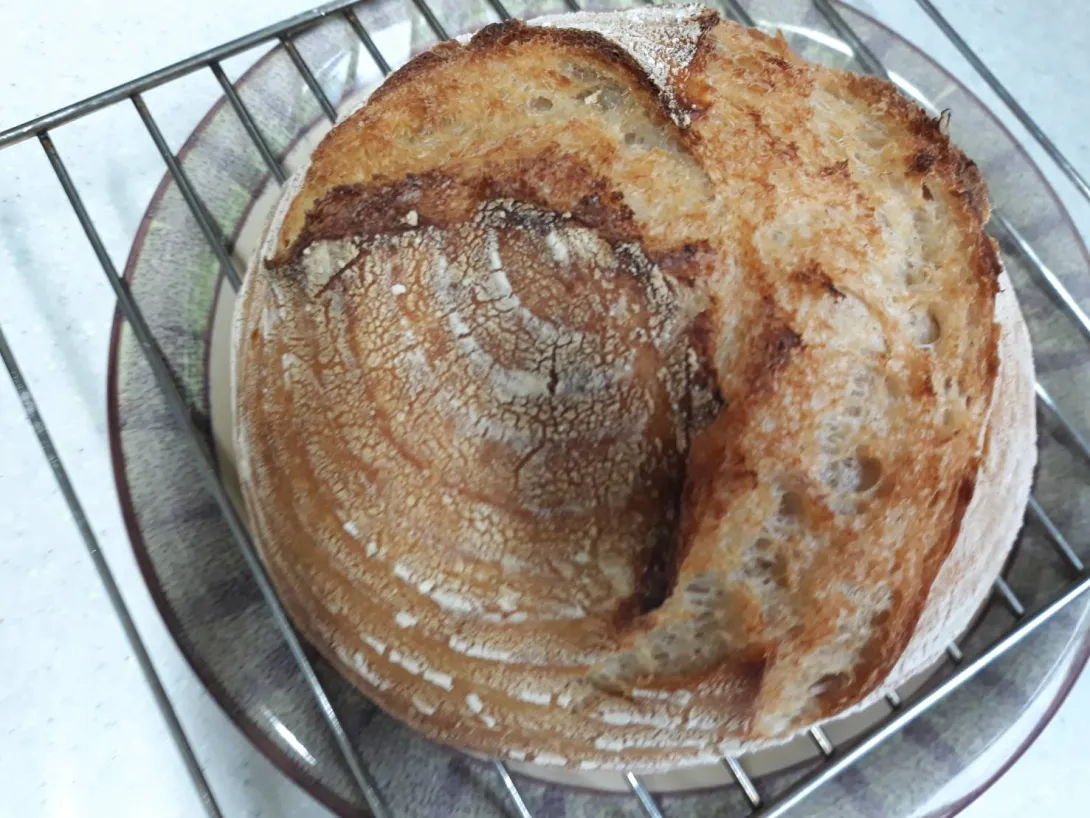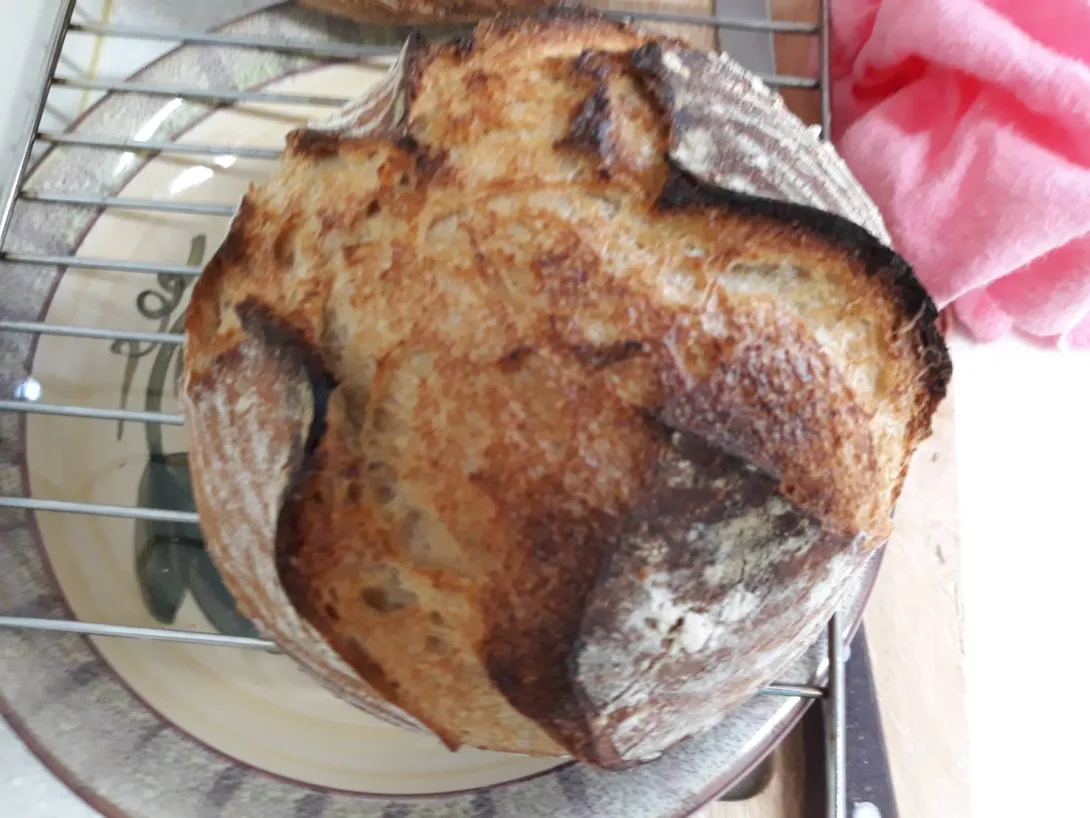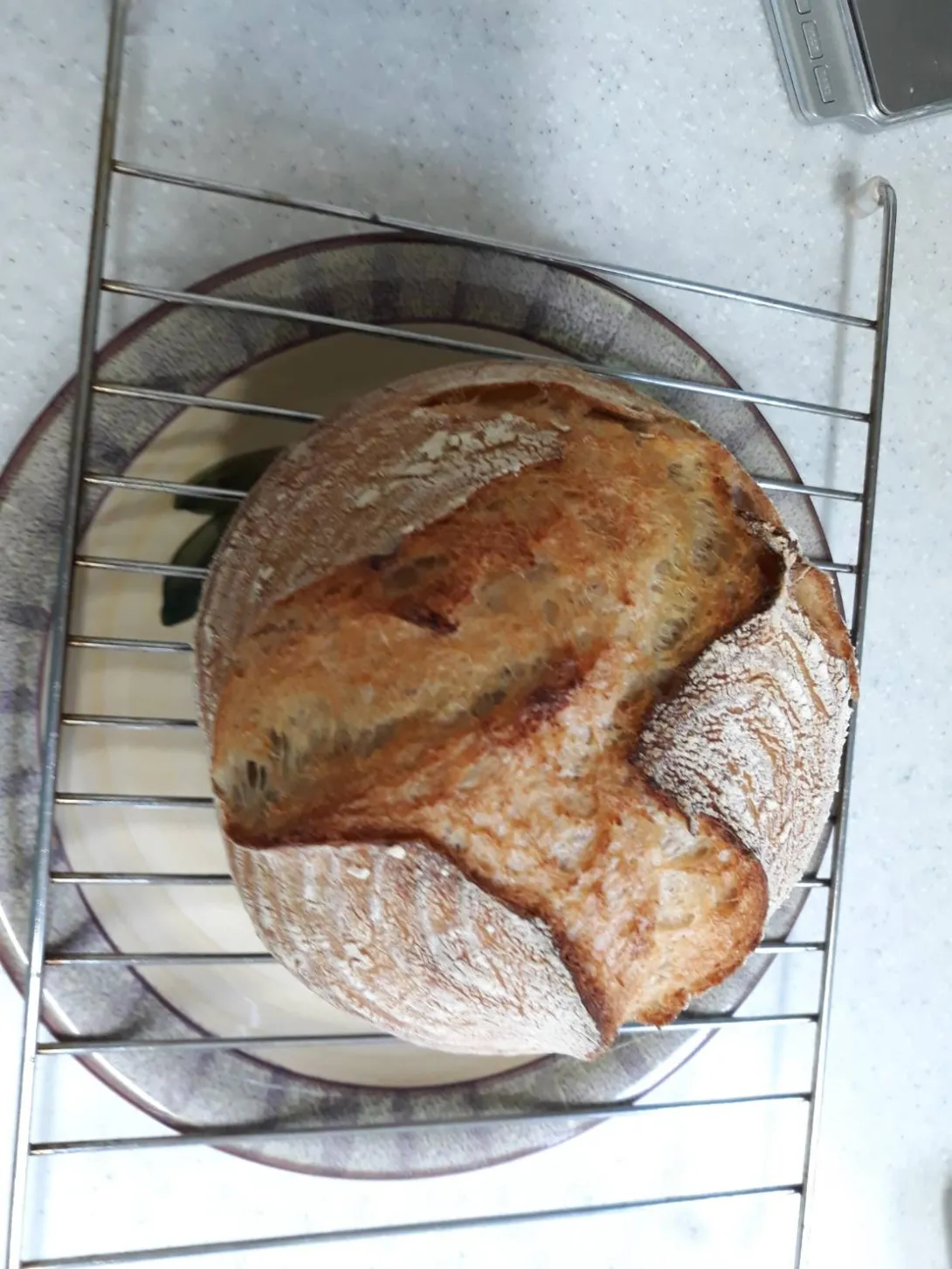


Those are the photos I took 3 years ago when I first started baking. I roughly remember that I mostly followed forkish's basic levain recipe but Instead of normal strech and folds I did coil folds and substituted final proof with a cold overnight retard. THIS video from forkish himself is what I did to shape my loaves. I really liked that when I don't score my boule and bake it seam side up I get this really cool, natural looking pattern. Also the height of those loaves were pretty impressive as well.
Few years later, I'm desperately trying to replicate those. Same method and flour, same dutch oven and same oven temp but it just doesn't seem to work.
I can make scored batards and boules just fine, but every time I try baking non-score like those the bread gets, 1) The seam almost completely sealed the time I bake it so the loaf couldn't expand and gets very little oven spring 2) The bread rises horizontally into a extremely ugly shape, Usually a mix and match between those two.
Any help please?
When shaping the bread before your final proof you might be sealing it too much which you want to do to create tension on the dough if you plan to flip it over and score.
You might also be baking at a temp that is too high and the crust on top is setting before the lower part which is causing it to spring out at the weak point on the side.
These are just guesses at this point. If you can post images of a current bake so we know what your current results are it will help us compare to those more ideal loafs you already posted.
Thanks for the response. I actually played around with tension a lot. shaping looser/tighter, incorporating a lot of flour while shaping to make the seal looser, cutting down final proof/retarding time to not give the dough enough time to heal. none of those seems to work very well :(
I don't think oven temp is the issue since my scored batards comes out in a pretty symmetrical shape with good oven spring, it's really just this style of score-less loaves that bothers me at this point.
don't really have pictures of my failed bake, it basically looks like a beginner's first loaf.
Welcome to TFL !
What changed?
Is this a different oven? Convection? Top heat ? Could this oven be baking hotter than the old one?
You say it's the "same flour", but do you mean the same type of flour, and maybe you changed brands?
Are you using a different banneton, or a different banneton liner, or different flour to dust the banneton/liner ?
Are you doing final shape differently? Are you wetting the countertop to final-shape, or dusting it with flour? And did that change from then to now?
Are you using different water? Have you moved and now the municipal water comes from a different source than before? Has an in-home water-filter or water-softener been added or subtracted?
Thanks, I joined this forum about 2 years ago but it's definitely my first time posting something.
I used same brand of local AP flour, same brand of bottled water(pretty sure. we only buy this brand)
same round banneton 180x90mm and pretty much everything remains the same. The only difference is that I bought a new oven, but I bake my boules in a dutch oven and preheats to a same temp(I put a thermometer in it with lid closed while it preheats).
I also played with all the different temps with my new oven ranging from 220c to 260c but just can't get the good rise. the more I experiment I'm more and more convinced that not scoring and baking seam side up like this is just way worse than scoring at providing good shape and ovenspring, but my old photos says otherwise.
I'm still curious if you are using your new oven in convection mode. That upper heating element can make a difference on the upper surface of the dough, even with a lidded dutch oven.
My guess is that your new oven is a convection model using top heat, and your old oven was not using top heat.
Even though the dutch oven is lidded, the top heat is _radiant_ heat which heats the lid hotter than the air temp. So if the new oven is using both top and bottom heating elements, that is going to be different than the old oven that used only the bottom one.
The "radiant heat" that the lid re-radiates down to the top of the dough does not necessarily or totally depend on the air temp within the dutch oven. So having the same air-temp inside the dutch oven doesn't over-ride or negate the radiant heat that the dough receives from the lid.
(I dropped out of college before I finished my engineering degree, so I may not have explained that 100% properly.)
If you can set your oven to not use convection mode, and to use bottom-heat only, my guess is you will get results closer to your old oven.
You can probably use convection with both elements (roast mode, some call it) for pre-heating. But to get results like the old oven, assuming the old oven was not convection, then you would need to bake in "bake mode" (bottom heat only) with the convection fan off.
--
I'm keying in on what Stephen suggested... The top radiant heat is making the lid hotter than it got in the old oven. And maybe that is just enough extra heat to keep the seams sealed, whereas the scores cut open the dough beforehand and make it easy for the dough to expand upward.
If the oven was the only thing that changed, then logically that is the most-likely cause of the different outcome.